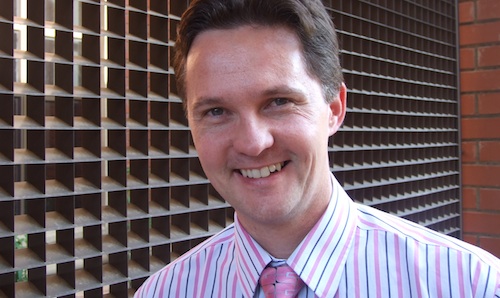
The growing portion of total consumer spending that Telkom extracts from fixed-line subscribers for broadband access is “not sustainable”, is “not right” and needs to change, says Internet Solutions (IS) MD Derek Wilcocks.
Speaking to TechCentral in the wake of this week’s public hearings held by the Independent Communications Authority of SA into local-loop unbundling, Wilcocks says it is “ridiculous” that last-mile subscription prices for end users and the wholesale charges levied by Telkom on Internet service providers is “heading to 60%” of the cost of fixed-line broadband services.
He believes “creative” solutions are urgently needed to address the cost and speed of “last-mile” fixed-line broadband in SA. “The last mile has really become the stumbling point from a capacity and cost perspective,” Wilcocks says. “We have to do something about this.”
Consumers also need higher connection speeds. “The mind-set that 4Mbit/s is enough is just not going to cut it anymore.”
He adds that it doesn’t make sense for Telkom to charge varying subscription fees for different line speeds. “It costs the same to put in the line, no matter what you put over it.”
Local-loop unbundling — where Telkom’s rivals are given access, in some or other form, to its last-mile copper cable — is only one part of the solution. Other remedies include freeing up additional radio frequency spectrum, especially in the bands traditionally used by television broadcasters, and making it easier for companies to invest in alternative last-mile infrastructure such as fibre to the home.
Wilcocks says it’s crucial that regulations make it easier for companies to get “way leaves” — rights of way to deploy new access networks — and that environmental impact assessments are done more quickly.
“If we can work on all these fronts, we can see a very different dispensation in SA for home users, mobile users and companies, be they small or large,” he says. “We need to make progress on all these fronts very quickly.”
Some degree of local-loop unbundling is necessary, Wilcocks says. What is up for debate is which model should be imposed. “A classic North American or European model, where you put equipment in Telkom’s exchanges, isn’t necessarily the right approach,” he says. “Other models include commercial unbundling, or the ability to separate out all of the services you don’t necessarily need to get from Telkom but that are currently bundled into the pricing.”
IS is experimenting with fibre to the home as a commercial proposition, but he admits the costs are still prohibitive.
“Extending fibre networks into the home is not something that is too remote, though the price points are still some way off what most home users would be prepared to pay,” Wilcocks says. “We are involved in trials using various technologies but we are a long way from commercial trials. Our trials are with a few users in a closed user group looking at various technologies to see if we can look at a different price point.”
Assuming single-story urban densities, fibre to the home will still cost between US$5 000 and $10 000 per household, he says. “That’s without looking at housing complexes and blocks of flats, which is a more attractive business model.”
Wilcocks says IS has a number of bandwidth resellers that are interested in fibre access projects. — Duncan McLeod, TechCentral
- Subscribe to our free daily newsletter
- Follow us on Twitter or on Facebook
- Visit our sister website, SportsCentral (still in beta)




